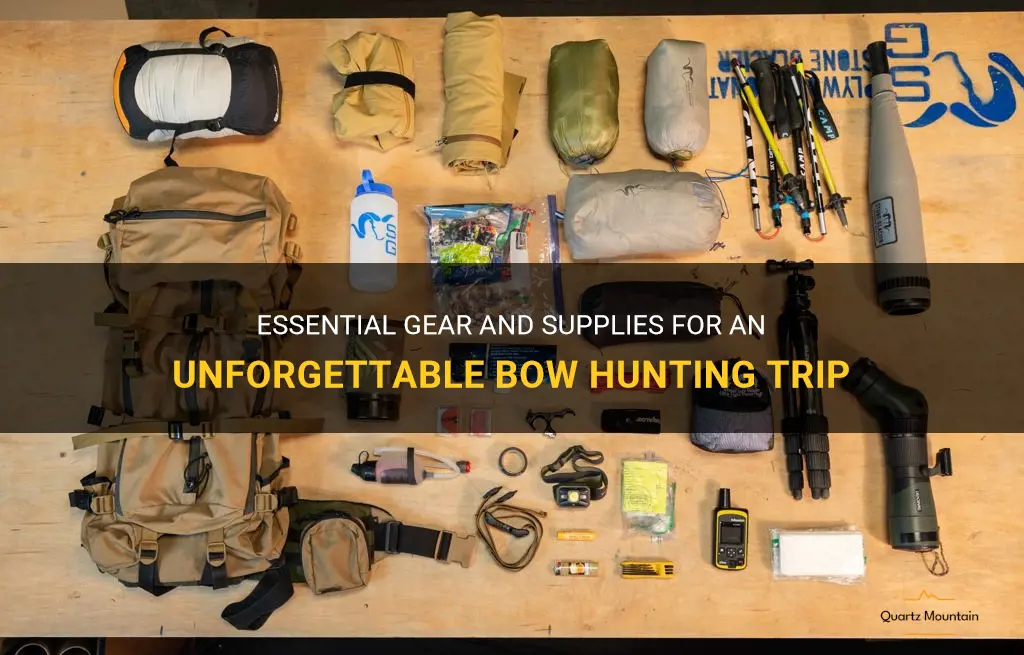
Are you an avid hunter, always on the lookout for an unforgettable bow hunting trip? If so, you know that having the right gear and supplies is essential for a successful and memorable experience in the wild. From high-quality bows and arrows to comfortable gear and reliable supplies, this guide will cover all the must-haves to ensure your next bow hunting trip is one for the books. So grab a pen and paper and get ready to take notes on the essential gear and supplies you need for an unforgettable adventure in the great outdoors.
What You'll Learn
- What are the essential items that should be packed for a bow hunting trip?
- Are there any specific items or tools that are necessary for successful bow hunting?
- How should one pack food and water for a bow hunting excursion?
- Are there any safety equipment or gear that should be included in a bow hunting pack?
- What are some tips for efficiently packing and organizing gear for a bow hunting trip?

What are the essential items that should be packed for a bow hunting trip?
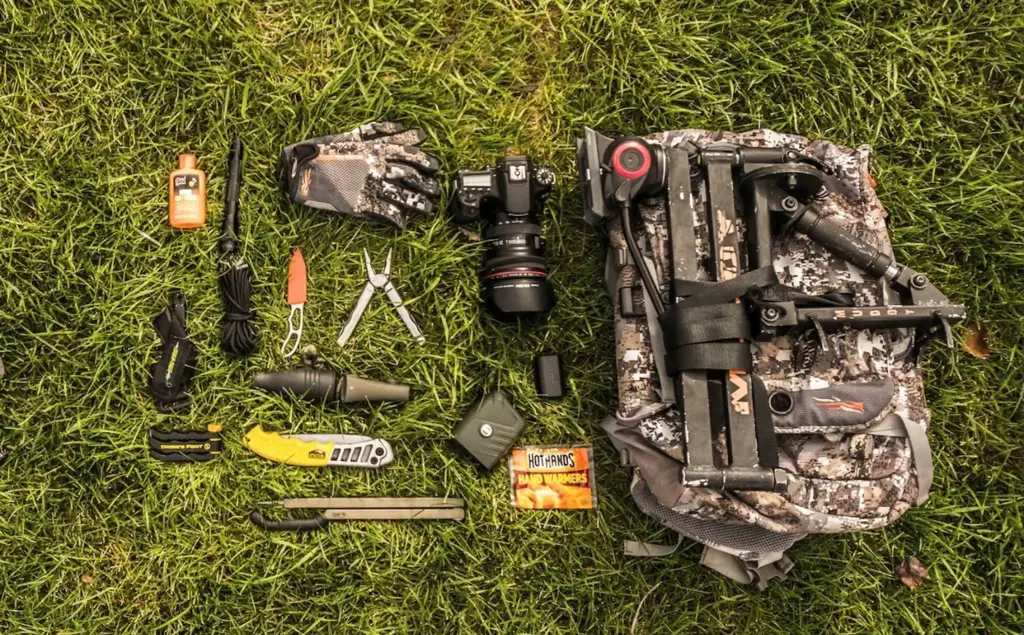
When going on a bow hunting trip, it is important to pack essential items that will help ensure a successful and safe experience. While the specific items may vary depending on the location and duration of the trip, there are a few key items that should always be included in a hunter's gear.
- Bow and arrows: This may seem obvious, but it is crucial to have a high-quality bow and arrows specifically designed for hunting. Consider factors such as draw weight, arrow speed, and accuracy when choosing your equipment. It is also important to bring a spare bowstring and arrowheads in case of any accidents or malfunctions.
- Hunting clothing: Dressing appropriately is essential for staying comfortable and concealed while hunting. Opt for camouflage clothing that blends in with the surroundings and provides adequate protection from the elements. Layer your clothing to adapt to changing weather conditions, and don't forget a good pair of hunting boots to keep your feet dry and comfortable.
- Safety harness: Safety should be a top priority while bow hunting. A safety harness is a must-have item for hunters who plan to use tree stands or elevated blinds. It prevents falls and ensures that you can hunt safely from an elevated position. Always remember to buckle up and secure the harness properly.
- Binoculars: Hunting involves identifying and tracking your prey from a distance. Binoculars are essential for spotting animals, determining their size, and observing their behavior. Look for lightweight and compact binoculars with a good magnification power to make your hunting experience more precise and enjoyable.
- First aid kit: Accidents can happen, especially when trekking through the wilderness. A basic first aid kit should contain bandages, antiseptic ointment, painkillers, insect repellent, and any necessary personal medications. It is essential to address any injuries promptly to prevent further complications and to have a safe and enjoyable trip.
- Navigation tools: It is easy to get disoriented in unfamiliar territory. Carry a compass and a map of the area to help navigate your way. Additionally, a GPS device or smartphone with GPS capabilities can be a valuable tool for marking trails, identifying landmarks, and finding your way back to camp.
- Field dressing and game processing equipment: After successfully bagging your prey, you will need the necessary tools for field dressing and processing the game. This includes a sharp knife, rubber gloves, bags for packing meat, and a game cart or backpack for transporting the harvested animal.
- Survival gear: It is essential to be prepared for unexpected situations in the wilderness. Carry items like a lighter, water purification tablets, emergency shelter, high-energy snacks, and a flashlight. These items can make a significant difference in staying safe and comfortable if you find yourself in a survival situation.
- Camping gear: If your bow hunting trip involves staying overnight, pack camping gear such as a tent, sleeping bag, cookware, and food. It is important to research the specific camping regulations in your hunting area and pack accordingly.
- License and permits: Before heading out on your hunting trip, make sure you have a valid hunting license and any necessary permits for the area you plan to hunt. Following the local regulations is important for ethical hunting and to avoid legal consequences.
Remember to check and double-check your gear list before embarking on your bow hunting trip. Each trip may present unique challenges, so it is essential to pack accordingly and be prepared for any situation that may arise. By packing these essential items, you increase your chances of having a successful and enjoyable bow hunting experience.
The Essential Packing Guide for December Travel in New York City
You may want to see also

Are there any specific items or tools that are necessary for successful bow hunting?
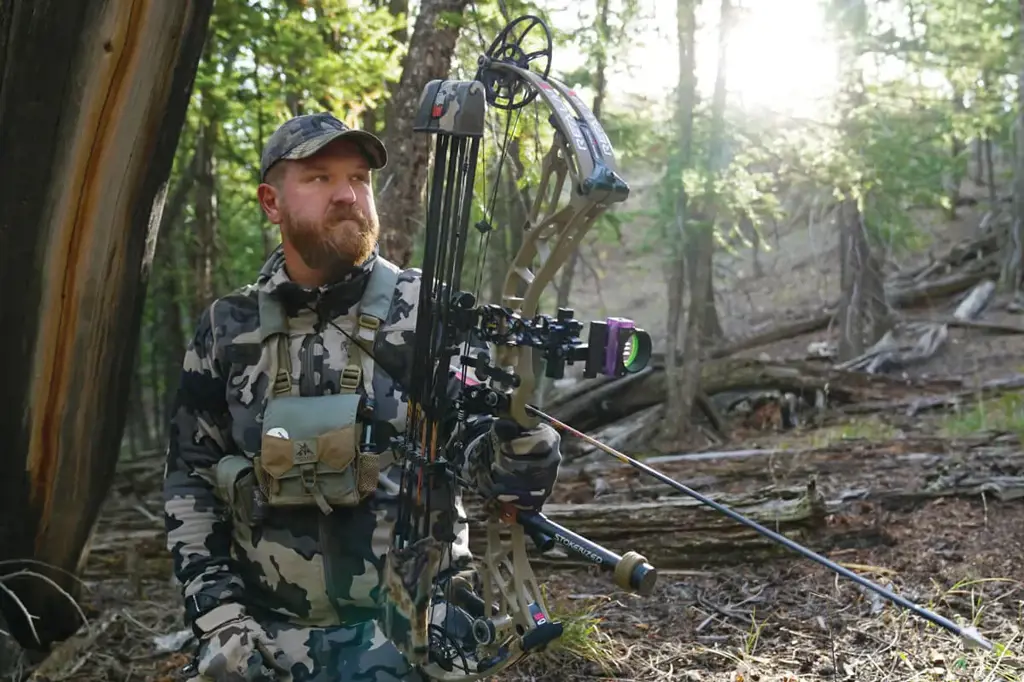
Bow hunting is a challenging and exhilarating sport that requires the use of specific items and tools to ensure success. While the list of necessary items may vary slightly depending on personal preference and the game being pursued, there are a few essential tools that every bow hunter should have.
One of the most important tools is the bow itself. There are many different types of bows available, including compound bows, recurve bows, and longbows. Each type of bow has its own advantages and disadvantages, so it's important to choose one that matches your skill level and hunting style. Compound bows are known for their accuracy and power, while recurve bows offer a more traditional feel. Longbows are popular among traditional archers and require a higher level of skill to use effectively. Regardless of the type of bow chosen, it's essential to practice regularly to become proficient with it.
Another crucial item for bow hunting is arrows. It's important to select arrows that are the correct length and weight for your bow. Arrows that are too long or too short can affect accuracy, while arrows that are too light or too heavy may not fly properly. Additionally, broadheads are attached to arrows to deliver a lethal hit to the game animal. There are various types of broadheads available, including fixed blade and mechanical broadheads. It's essential to select broadheads that are legal for hunting in your area and to practice shooting them to ensure they fly true.
A quality release aid is also necessary for successful bow hunting. A release aid is a device that attaches to the bowstring and allows the archer to release the string consistently and accurately. There are different types of release aids, including thumb releases, wrist releases, and back tension releases. The best release aid will depend on personal preference and shooting style. It's important to choose one that feels comfortable and allows for a smooth release.
Other essential items for bow hunting include a bow sight, a stabilizer, and a quiver. A bow sight is a device that attaches to the bow and aids in aiming by providing reference points for accurate shooting. A stabilizer is a weighted attachment that helps balance the bow and reduce hand shock. A quiver is used to hold arrows while hunting to ensure quick and easy access.
While not essential, there are additional tools that can enhance the bow hunting experience. One such tool is a rangefinder, which accurately measures the distance between the hunter and the target. This information is crucial for making accurate shots at various distances. Another useful tool is a ground blind or tree stand, which helps conceal the hunter and provides a better vantage point for spotting game.
In conclusion, there are several specific items and tools that are necessary for successful bow hunting. These include a bow, arrows, broadheads, a release aid, a bow sight, a stabilizer, and a quiver. Additional tools such as a rangefinder, ground blind, or tree stand can further enhance the hunting experience. It's important to choose high-quality equipment and practice regularly to become proficient with the tools of the trade. With the right gear and skills, bow hunting can be an immensely rewarding and successful endeavor.
Essential Items for Flight Attendant Training: Packing Guide for Success
You may want to see also

How should one pack food and water for a bow hunting excursion?
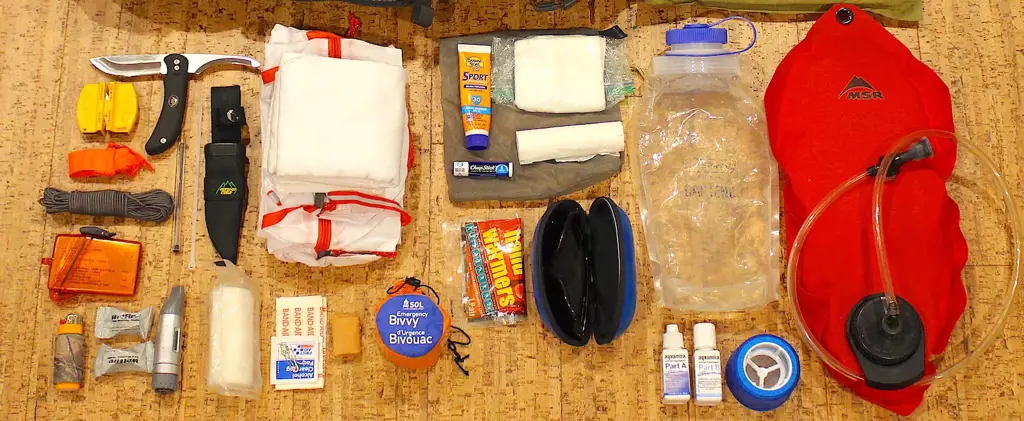
When going on a bow hunting excursion, it is important to pack enough food and water to sustain yourself throughout the day. Proper nutrition and hydration are crucial for maintaining energy levels and mental focus while out in the field. Additionally, being prepared with enough food and water can prevent dehydration and fatigue, allowing you to stay alert and make accurate shots. Here are some tips on how to pack food and water for a bow hunting excursion.
- Choose lightweight and compact food options: Since you will be carrying all your gear with you, it is important to choose food that is lightweight and does not take up much space. Opt for energy-dense foods such as energy bars, trail mix, jerky, and dried fruits. These foods provide a good balance of carbohydrates, fats, and proteins, which are essential for sustained energy.
- Pack foods that do not require refrigeration: When hunting, you may not have access to refrigeration, so it is important to choose foods that do not spoil easily. Avoid packing perishable items such as sandwiches, fruits, or dairy products. Instead, go for foods that have a longer shelf life and do not need to be kept cold.
- Consider the length of your excursion: The duration of your hunting trip will determine how much food you need to pack. If you are going on a day trip, pack enough food to last you for the entire day. However, if you are planning a multi-day hunting excursion, you will need to pack enough food to sustain you for the entire duration. Consider packing freeze-dried meals or dehydrated foods, as these are lightweight, easy to prepare, and have a long shelf life.
- Hydrate properly: Staying hydrated is crucial when spending long hours in the field. Pack enough water to last you for the entire day, and consider bringing a water filtration system or water purification tablets in case you run out of clean water. It is recommended to drink at least 1 liter of water every few hours to prevent dehydration. Avoid sugary or caffeinated drinks as they can dehydrate you even more.
- Pack snacks for an energy boost: In addition to your main meals, pack some snacks that you can enjoy throughout the day. Nuts, granola bars, and beef jerky are great options as they provide a quick boost of energy when you need it. Avoid sugary snacks that can cause a sudden spike in blood sugar levels, followed by a crash.
- Don't forget about electrolytes: When hunting in hot weather or engaging in strenuous activity, you may lose electrolytes through sweat. Packing electrolyte-rich drinks or electrolyte tablets can help replenish these essential minerals and keep you hydrated.
Remember, always pack more food and water than you think you will need. It is better to have extra than to run out in the middle of the day. By properly packing food and water for your bow hunting excursion, you can ensure that you stay fueled, hydrated, and focused throughout the day, increasing your chances of a successful hunt.
Essential Items to Pack for Your Hysterectomy Recovery
You may want to see also

Are there any safety equipment or gear that should be included in a bow hunting pack?
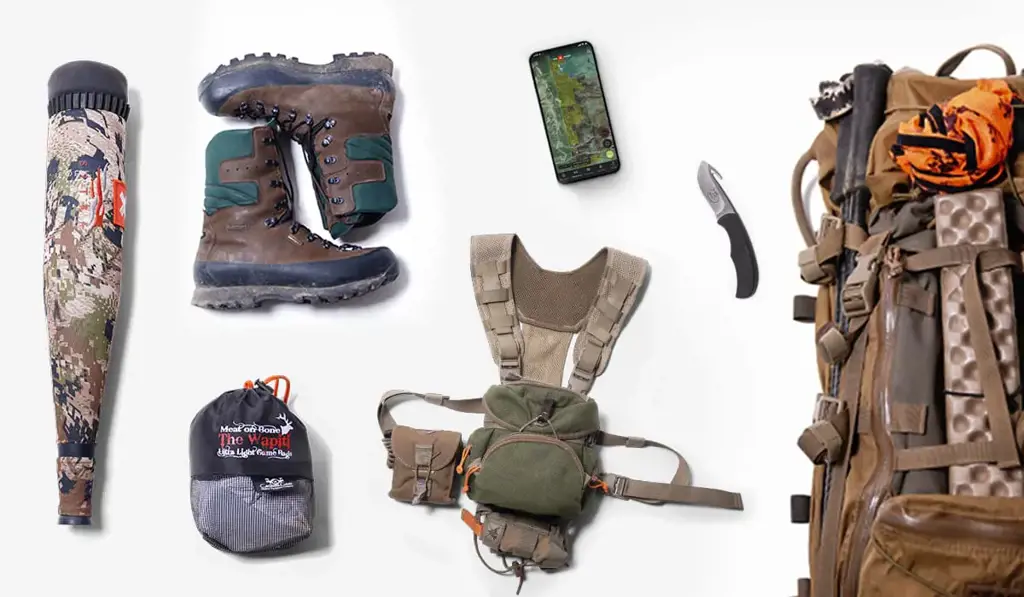
Bow hunting is an exciting and challenging sport that requires skill, precision, and a deep understanding of nature. It is important to have the right gear and equipment for a successful and safe bow hunting experience. Among the essential items to include in a bow hunting pack are safety equipment and gear.
One of the most important safety equipment to have in a bow hunting pack is a safety harness or tree stand safety system. This is crucial for hunters who use tree stands to elevate themselves for better visibility and to stay out of an animal's line of sight. A safety harness will prevent falls and injuries by securing the hunter to the tree, acting as a safety net. It is essential to choose a harness that fits properly and has a strong and reliable attachment system.
Another important safety gear to include is a blaze orange hat or vest. This brightly colored piece of clothing is designed to make the hunter more visible to other hunters in the area, preventing potential accidents. It is recommended to wear blaze orange on the head or upper body, as these are the parts that are most visible in the field. Some states and hunting regulations even require hunters to wear blaze orange during specific hunting seasons.
A quality pair of safety glasses should also be part of the bow hunting pack. These glasses will protect the hunter's eyes from flying debris, small branches, or any other potential hazards. Safety glasses with impact-resistant lenses and UV protection offer the best protection for the hunter's eyes without obstructing their vision. It is important to choose glasses that fit properly and do not interfere with the shooting process.
Ear protection is often overlooked but vital for maintaining the hunter's overall safety and well-being. The repeated exposure to the loud noise of the bow can cause hearing damage over time. Therefore, it is important to invest in quality ear protection, such as earplugs or earmuffs, to reduce the risk of long-term hearing loss. These items should be worn at all times when shooting a bow to protect against the loud noise produced upon release.
A GPS device or a map and compass can be invaluable safety tools when hunting in unfamiliar territory. These tools help prevent getting lost and allow the hunter to navigate back to their starting point or designated meeting spot. A GPS device is particularly useful as it provides real-time location data, making it easier to track and find specific areas in the field.
In addition to safety equipment, it is essential to pack basic first aid supplies. A small first aid kit should include items such as bandages, antiseptic wipes, pain relievers, and tweezers. These items can be used to treat minor injuries, blisters, or cuts that may occur while in the field. Having these supplies readily available can help prevent infections and provide immediate relief until advanced medical help is available.
To summarize, a bow hunting pack should always include safety equipment and gear to ensure a safe and enjoyable hunting experience. This should include a safety harness or tree stand safety system, blaze orange clothing for visibility, safety glasses for eye protection, ear protection to prevent hearing damage, navigation tools like a GPS device or a map and compass, and a basic first aid kit. By having these items readily available, hunters can minimize risks and focus on the thrill of bow hunting while staying safe in the field.
Essential Items to Pack for an Unforgettable Royal Caribbean Cruise: A Comprehensive Checklist
You may want to see also

What are some tips for efficiently packing and organizing gear for a bow hunting trip?
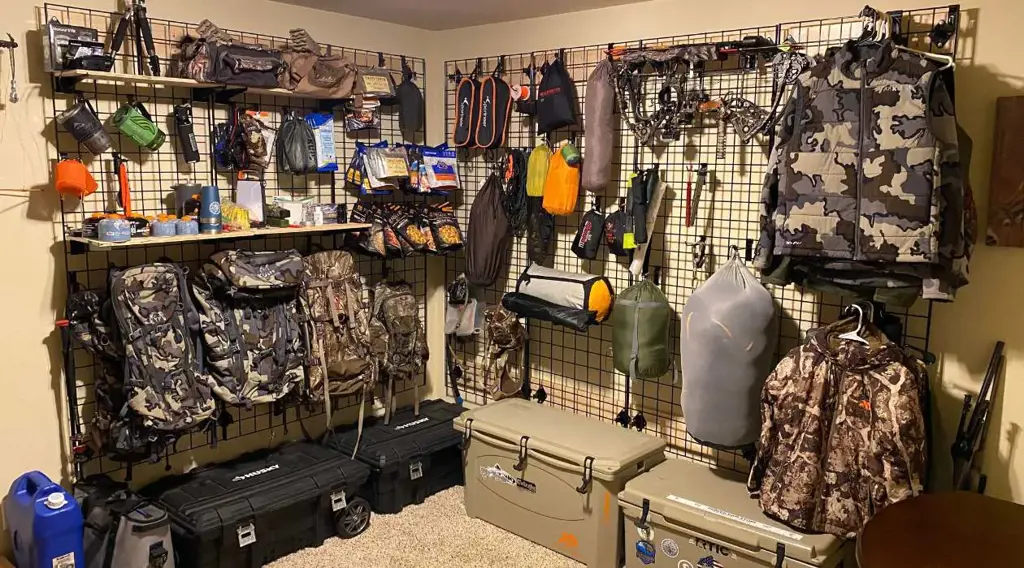
Bow hunting trips can be exciting and rewarding, but they also require careful planning and organization to ensure a successful and enjoyable experience. One critical aspect of preparing for a bow hunting trip is efficiently packing and organizing your gear. By following a few tips and guidelines, you can optimize your packing process and ensure that you have everything you need to make the most of your hunting adventure.
First and foremost, it is crucial to create a detailed checklist of all the gear you will need for your bow hunting trip. This checklist should include items such as your bow, arrows, broadheads, release, camouflage clothing, boots, backpack, hunting knife, binoculars, rangefinder, and other essential hunting accessories. By having a comprehensive checklist, you can ensure that you do not forget any important items and can avoid any last-minute scrambling before your trip.
Once you have your checklist, it is time to start organizing your gear. One effective strategy is to group similar items together. For example, you can pack all your hunting clothing in one bag, your hunting accessories in another, and your camping gear in a separate bag. By grouping items together, you can easily locate what you need when you need it, saving you precious time and preventing frustration.
Another important tip is to pack your gear strategically to maximize space and minimize weight. Start by placing your heaviest and largest items at the bottom of your bag or backpack. This will help distribute the weight evenly and make it easier to carry. Next, fill any empty spaces with smaller items or clothing to utilize every inch of space efficiently. Additionally, consider using compression bags or containers to further reduce the volume of your gear and optimize space.
Organizing your gear in a systematic manner can also save you time and effort in the field. For example, consider packing your bow and arrows in an easily accessible location, so you can quickly set up for a shot when you spot your target. Similarly, keep essential hunting accessories like your rangefinder and binoculars within arm's reach, so you can easily locate and use them when needed. By organizing your gear in a logical and accessible way, you can spend less time searching for items and more time focused on the hunt.
Furthermore, it is crucial to take care of your gear before and after your bow hunting trip. Inspect your equipment for any damage or wear and tear, and make any necessary repairs or replacements before heading out. After your trip, thoroughly clean and store your gear in a dry and secure location to prevent any damage or deterioration. Taking proper care of your gear will not only extend its lifespan but also ensure that it performs optimally when you need it.
In conclusion, efficiently packing and organizing your gear is essential for a successful bow hunting trip. By creating a detailed checklist, grouping similar items together, strategically packing your gear, and organizing it in an accessible manner, you can save time, maximize space, and ensure that you have everything you need for a memorable hunting adventure. Remember to also take care of your gear before and after your trip to maintain its performance and longevity. By following these tips, you can set yourself up for a successful and enjoyable bow hunting experience.
Essential Items to Pack in a Tornado Survival Bag
You may want to see also
Frequently asked questions
When packing for bow hunting, it's crucial to have the right equipment. This includes your bow and arrows, which should be in good condition and properly sighted. Additionally, it's important to have a release aid, gloves or shooting tabs to protect your fingers, and a quiver to hold your arrows. Don't forget to pack a range finder to help accurately judge distances, as well as binoculars to spot game from a distance. Finally, make sure you have a sharp knife, gutting gloves, and game bags for processing any game you harvest.
The clothing you pack for bow hunting should be chosen with comfort and concealment in mind. Opt for lightweight, moisture-wicking base layers to help regulate your body temperature and keep you dry. Layer up with insulating mid-layers that can be easily added or removed as needed. Choose camouflage clothing that matches the environment you'll be hunting in, and consider incorporating scent-eliminating or scent-blocking technology to reduce your scent profile. Don't forget to pack a waterproof and windproof outer layer to protect you from the elements.
In addition to your bow, arrows, and clothing, there are several other essential gear items you should pack for a bow hunting trip. A sturdy backpack or daypack is important for carrying all your gear and supplies. Other essentials include a headlamp or flashlight for navigating in low light conditions, a water bottle or hydration bladder to stay hydrated, and a first aid kit for any injuries or emergencies. You should also bring a survival kit with items such as a fire starter, emergency blanket, and compass in case you become lost or stranded.
Aside from the basic equipment and gear, there are a few additional items you should consider packing for a bow hunting trip. These include a comfortable and compact hunting chair or cushion for extended periods of sitting and waiting. Some hunters also find a portable ground blind or tree stand to be beneficial for better concealment and an elevated vantage point. Additionally, pack some snacks and food items that are easy to eat on the go and provide sustained energy throughout the day. Lastly, don't forget to bring a camera or smartphone with a good quality zoom lens to capture any memorable moments or successful hunts.







